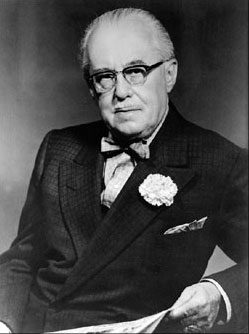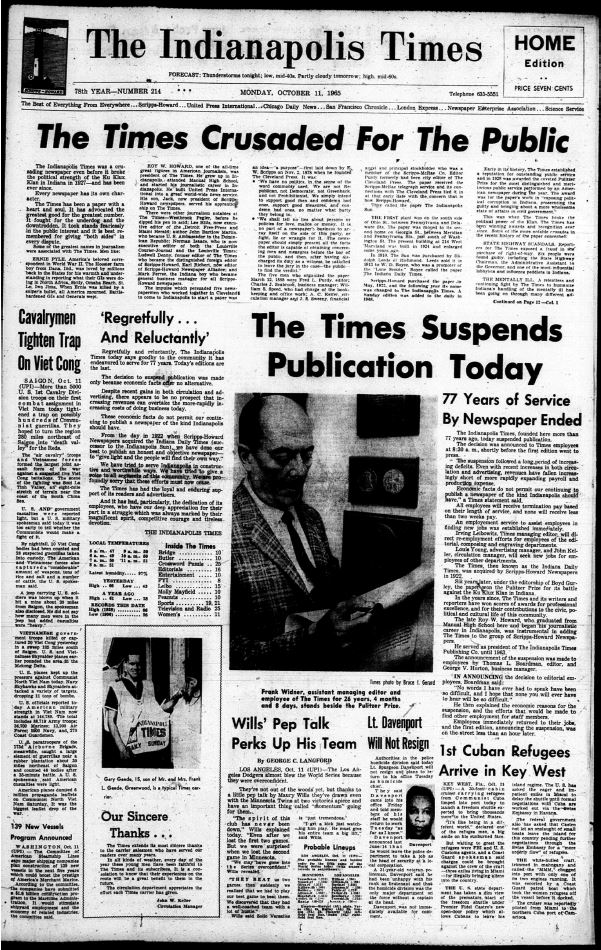The was founded as the on March 12, 1888, by five newspapermen who had worked together in Cleveland, Ohio. They were led by Fred L. Purdy, city editor of the Cleveland and founding editor of the . J. S. Sweeny was the paper’s principal stockholder and chief financial backer. The Sun maintained ties with the Cleveland newspaper and with the Scripps-McRae (later Scripps-Howard) telegraph service.

The Sun was sold to Rudolph Leeds of Richmond, Indiana, in 1910. Three years later, W. D. Boyce bought the paper and changed its name to the . In 1914, Boyce and his partner, J. W. Banbury, changed the paper’s name to the . Scripps-Howard bought the paper in 1922 and changed its name to the in 1923.
The was first located at a plant on the south side of Ohio Street, between Pennsylvania and Delaware streets; its second location was on Georgia Street, between Meridian and Pennsylvania streets. The third and last location was at 214 West Maryland Street (where a plaque now marks the spot). The building on West Maryland was erected in 1924 and expanded in 1950, increasing the floor space from 28,000 to 52,000 square feet at a cost in excess of $1,150,000.

Known for “lively and sometimes courageous journalism,” the was frequently engaged in crusades against injustice and corruption on both a city and a state level. The received a in 1928 for “exposing political corruption in Indiana, prosecuting the guilty and bringing about a more wholesome state of affairs in civil government.” The award-winning series appeared in 1927 and exposed activities in Indiana, helping to break the strength of that organization in the state.
Indianapolis native served as president of the from 1922 to 1964 and built the United Press International into a worldwide news service. His son Jack, who served as president of Scripps-Howard, began his career on the . Other names associated with the paper include Lee Hills, later executive editor of the and the author and diplomat ; and Norman Isaacs, later executive editor of the and the .

In addition to its coverage of Klan activity in the 1920s, the Times played a key role in exposing the state highway scandals of 1957-1958, voter fraud in the 5th District during the election of 1960, and a scandal involving mechanics’ liens in 1961-1962. In 1961, the Times found local jobs for nearly 4,000 unemployed Hoosiers by running help wanted ads for free, and in 1962 the paper’s exposure of errors in the reporting of crime statistics in Indianapolis, a practice that disguised the city’s growing crime rate, led to enlarged street patrols by police.
From 1960 to 1964, the waged a successful campaign to persuade the Indianapolis Public Schools to provide better school lunches through use of the federal surplus food program. The paper also took pride in its long-term coverage of such issues as humane treatment of the mentally ill, urban renewal, and hospital development.
Although increased circulation led to the introduction of a Sunday edition in 1948 and building expansion in 1950, by the 1960s the proved unable to compete with its two rivals, the and the . When the paper ceased publication on October 11, 1965, the ranked third in its local market with a daily circulation of only 89,374 and a Sunday circulation of 101,000.

Help improve this entry
Contribute information, offer corrections, suggest images.
You can also recommend new entries related to this topic.

